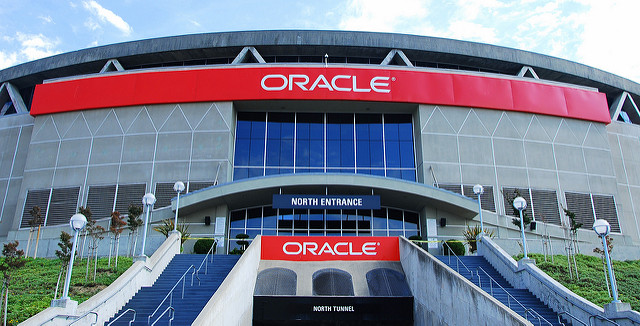What is Oracle’s Counterpunch to Salesforce’s MuleSoft Move?

Oracle’s (NYSE: ORCL) recent quarterly results may have outpaced market expectations, but slowing cloud growth has caused a stir amongst analysts as they continue to downgrade the company. The market was very concerned and the stock fell 9% – the worst decline in the last five years.
Oracle’s Financials
Revenue for the third quarter grew 7% over the year to $9.77 billion with an EPS of $0.83. The market was looking for revenues of $9.77 billion and an EPS of $0.72.
For the quarter, total Cloud revenue grew 32% to $1.57 billion. Within the segment, Cloud Software as a Service revenue grew 33% to $1.15 billion. But the market was not pleased. It was looking for cloud revenue of $1.18 billion. Platform-as-a-service and Infrastructure-as-a-Service sales rose 4% to $415 million, marginally ahead of the analyst expectations of $407 million.
Revenue from Cloud and On-Premise Software climbed 8% to $7.98 billion. Oracle also saw new software license sales grow 14% to $1.39 billion. But that too was lower than the $1.42 billion consensus estimate from analysts. Software license updates and product support sales rose 52% to $5.03 billion versus the $4.97 billion Wall Street estimate. Total on-premise software revenue rose 4% to $6.42 billion, marginally ahead of the consensus of $6.39 billion. Hardware revenue fell 3% over the year to $994 million and Software revenue declined 2% to $796 million.
For the current quarter, total revenues are expected to grow in the range of 1%-3%. It expects to report adjusted earnings of $0.92-$0.95, compared with the market’s forecast of $0.90 for the quarter.
Oracle’s Slowing Growth
The market was particularly disappointed by Oracle’s slowing cloud growth. For the current quarter, Oracle expects its cloud business to grow between 19% to 23%. The market was looking for a growth of 24%. Analysts believe that the slowing growth is because its transition to the cloud is “taking longer than initially expected“. Compare the growth with Amazon that reported a 45% increase in AWS revenues this past quarter.
According to a report published by Canalys for the third quarter of fiscal 2017, all other vendors appear to be reporting rather strong growth. Microsoft’s infrastructure cloud services reported a 90% increase, Alphabet reported a 75% increase and even the market leader Amazon reported a 40% growth. Compared with these vendors, Oracle’s recent 32% growth, and a reduced forecast, is concerning.
Questions for Oracle’s Board
Oracle entered late in the cloud race, and the market expected it to grow at a much faster clip to keep pace with the early movers in the field. But things don’t appear to be going that way. Over the last few years, Oracle has added quite a portfolio to its cloud and SaaS capabilities through acquisitions. It is counting on its Autonomous suite that includes Analytics, Mobility, Application Development, and Integration services to help accelerate growth. But the market is hungry for bigger numbers. What else does Oracle have in store? What is it doing to accelerate growth? What other acquisitions are on its radar? Salesforce has just announced a bold move by acquiring the fast-growth MuleSoft for $6.5 Billion. What is Oracle’s counterpunch?
Its stock is currently trading at $47.05 with a market capitalization of $194.8 billion. It touched a 52-week high of $53.48 earlier this month. Its 52-week low was $43.60 in April last year.
Photo Credit: May Wong/Flickr.com
Featured Videos
Can 1M/1M Help Me Raise Money?
How Does 1M/1M Democratize Entrepreneurship Education?
How Does 1M/1M Democratize Management Consulting?
When Is The Right Time To Join 1M/1M?
Can 1M/1M Help Me With Business Development?
Can 1M/1M Help Me With Market Sizing?
Can 1M/1M Help Me Validate My Product?
Will I Have Private 1-on-1 Sessions In 1M/1M?
How Does 1M/1M Help Entrepreneurs Connect With Silicon Valley?
Mentoring or Consulting?
Why Does 1M/1M Charge $1000 a Year?
Why Does 1M/1M Partner With Local Organizations?
Why Don\’t Mentoring Networks Work?
Why Is It Important To Study With 1M/1M Now?
Dan Stewart Story
Vikrant Mathur Story
